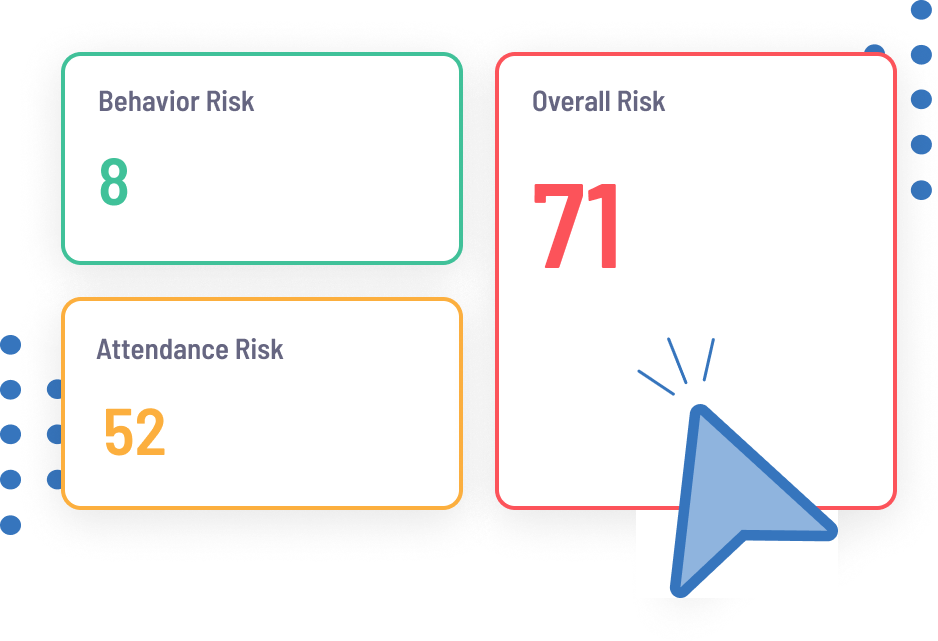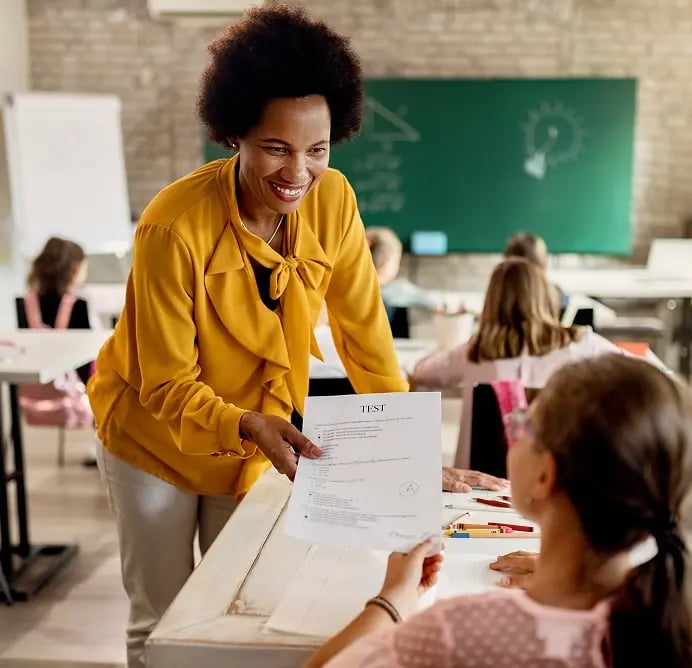I vividly remember standing in front of a 12-year-old who refused to sit in his assigned seat or start the daily assignment. The tension in the room was high, and I was already at my wits’ end after a tough day. His defiance felt like the final straw. Overwhelmed, I called the front office for an administrator. It took 15 minutes out of my 45-minute class, while the rest of the students watched instead of focusing on their work.
Looking back, I see where I went wrong. My biggest mistake? Falling into a power struggle with the student instead of de-escalating the situation. That moment taught me what not to do – and how important it is to approach challenging behavior with a plan in place.
Key Strategies for Student De-Escalation
- Teacher self-regulation de-escalates conflict. Staying calm helps reduce student outbursts and creates a safe learning environment.
- Strong relationships prevent behavior issues. Simple actions like offering choices and listening build student trust.
- Avoid power struggles. Clear expectations and limited, acceptable choices helps students feel in control without escalating conflict.
From a recent podcast conversation with long-time educators, Tiffany Burns and Erica Bare from Connecting Through Conversation, here are five practical strategies to help educators de-escalate tense situations and create an environment rooted in trust and connection.
🎧 Listen to the Schoolin' Around Podcast episode, De-Escalation Done Right: Practical Tips for Teachers
1. Unmatch Escalating Emotions
When students’ emotions are high, one of the most powerful tools educators have is their ability to regulate their emotions. Emotions are contagious; the science behind this lies in something called mirror neurons.
Here’s how you can use intentional calm to de-escalate a student’s big emotions:
- Slow your speech and use a steady, calm tone.
- Take deep breaths to regulate your own energy.
- Purposefully avoid matching their heightened emotional state.
🫶 This creates a calming effect that signals to students that they are in a safe and steady environment.
2. Use Silence as a De-escalation Tool
In my interactions with students, I often felt the need to have the last word—a tendency that frequently led to me saying way too much. When emotions run high, an abundance of words can overwhelm an already stressed student. While it’s natural to want to explain or reason with a student during emotional moments, their capacity to process verbal input is greatly reduced.
Instead, try the following:
- Use as few words as possible. A calm phrase like, “I’m here when you’re ready,” can be enough.
- Give the student physical space and reduce verbal noise by staying quiet.
- Allow for pauses, so the student has time to self-regulate.
This not only calms the student - it calms you, too! And it gives students a sense of safety and reassurance.
3. Avoid Power Struggles with Students
Power struggles with students stem from their need to assert control. These moments can escalate quickly and lead to frustration for both parties. The key is to avoid engaging in the struggle. State expectations clearly, and when possible, offer choices that give students a sense of control and shift their focus away from refusing outright.
Here’s how:
Avoid turning instructions into questions:
- Instead of, “Could you please take your seat?” say, “It’s time to sit down.”
- Don’t end instructions with “okay?” unless it’s truly a choice.
Offer manageable choices that are acceptable to you:
- Example for younger students: “It’s time to come inside. Do you want to walk by yourself or hold my hand?”
- Example for older students: “This assignment needs to be done today. Would you like to finish it now or during lunch?”
💡 Resource: The Tier 2 Behavior Intervention Guide
4. Model Emotional Regulation and Accountability
No one gets emotional regulation right every time, and that’s okay. What’s most important is showing students how to own their mistakes and repair relationships. This is a good way to build trust and stronger relationships with students.
⭐️ When you handle a situation poorly, consider:
- Apologizing authentically: “I didn’t respond as I wanted to earlier, and I’m sorry.”
- Explaining how you’ll do better next time.
- Modeling ownership and showing that it’s okay to make mistakes as long as you strive to grow.
These moments are powerful and teach students valuable lessons in accountability and emotional growth.
5. Prioritize Relationships to Reduce Behaviors
Building strong relationships is the foundation for reducing challenging behaviors and creating a safe learning environment. The good news? It doesn’t require a lot of extra time.
✅ Try these ways to prioritize connection:
- Greet students warmly at the door each morning.
- Show genuine interest in their lives by asking about their weekend or hobbies.
- Listen actively when students share challenges or concerns.
- Celebrate their successes, both big and small.
⭐️ When students feel valued and noticed, they’re less likely to engage in disruptive behavior, making the classroom a more positive space for everyone.
A Recap: De-Escalation Strategies
After the challenging standoff with the young man who refused to sit in his seat, I made an intentional effort to work on my own emotional regulation in the classroom. The shift transformed my teaching. By avoiding power struggles and focusing on connecting with my students, my classroom became safer and more supportive.
When educators use skills like de-escalation and relationship-building, students feel valued and ready to learn. These strategies don’t just address behavior—they build trust, foster meaningful relationships, and remind us why this work matters. Every connection brings us closer to the kind of impact that drew us to teaching in the first place!
Virtual Learning Focused on Behavior!
Led by experienced school leaders and packed with practical, real-life ideas and resources you expect from Branching Minds, the Mini Summit is a deep dive into MTSS behavior intervention for students with intensive needs, including intervention strategies, determining the function of behavior, connecting with challenging students, screening, prevention, and more.

About the author
Larissa Napolitan
Larissa Napolitan is the Content Marketing Manager at Branching Minds and host of the Schoolin’ Around podcast, where she spotlights innovative voices and practices shaping education today. A former middle school teacher and instructional coach, Larissa draws on her classroom experience to create meaningful content that connects research, storytelling, and practical insights for school and district leaders. She is passionate about amplifying educator voices and supporting the growth of all students.

Proactive Support Starts Here: Early Warning with Branching Minds
Support your students with an Early Warning System from Branching Minds













.png?width=1436&height=956&name=5%20Tips%20for%20De-Escalation%20and%20Building%20Strong%20Relationships%20with%20Students(preview).png)

.png?width=600&height=300&name=Mini-Summit-2025(preview).png)



